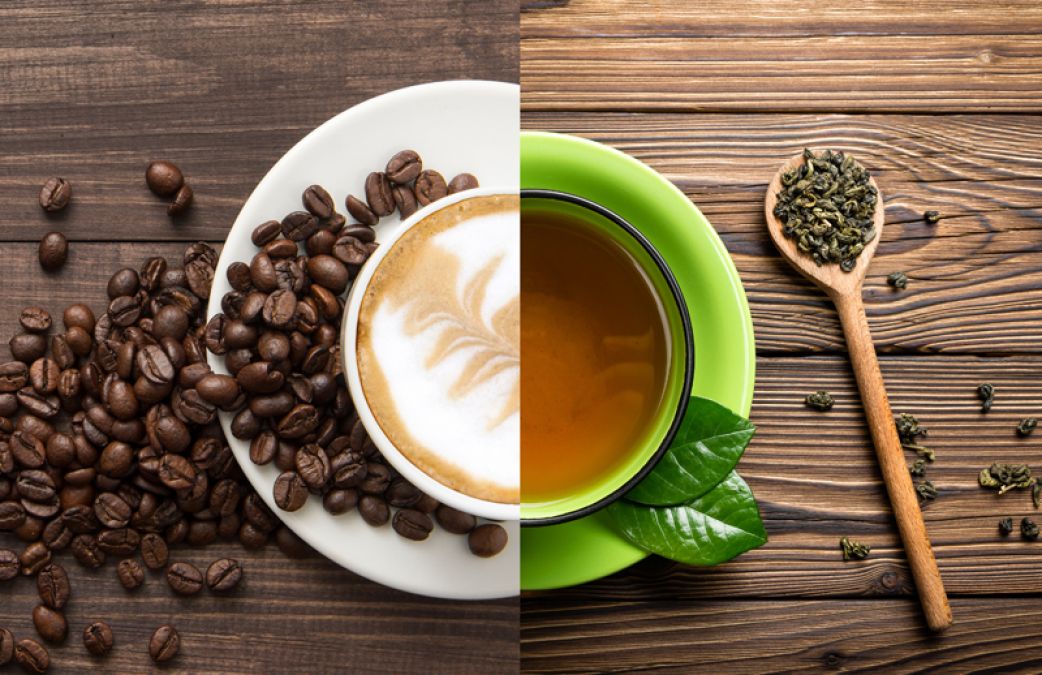Origin of Indian food
Registration Form Contact UsIndia's cuisine is one of the most diversified in the world, distinguished by its precise and subtle use of the various spices, vegetables, cereals, and fruits found throughout the country. The cuisine of each geographical location contains a unique range of foods and culinary skills that represent the ethnically diverse Indian subcontinent. The religious beliefs and culture of India have influenced the evolution of its food.Saffron, coriander, ginger, cumin, cloves, and other spices are commonly used in Indian cuisine to enhance the flavor of each bite. A variety of herbs and locally discovered components have been used to connect together many types of cuisines, resulting in a worldwide popular cuisine today.The Hindu and Muslim styles of cooking have had the largest influence on Indian cuisine. Each of the settlers that came to India brought their own cooking techniques with them. In India, there are two cooking cultures: Hindu for vegetarian meals and Muslim for meat cooking.Mughlai cuisine, including kabaas, creamy Kormas (curries), and nargisi kaftas (meatballs), biryani (a layered rice and meat dish), rogan josh, and other popular meals served in a clay oven or tandoor, are magnificent contributions given by Muslim settlers in India.

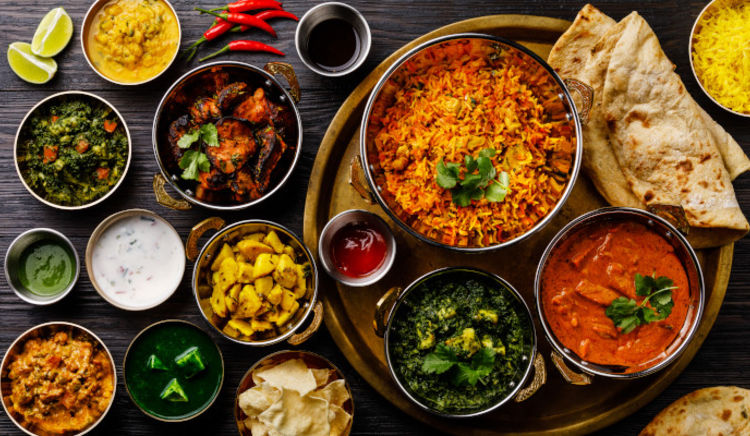
History and Influences
The origins of Indian cuisine may be traced all the way back to Harappan times. Wheat, rice, millet, chickpeas, and lentils were staples of the ordinary diet during this time. To add flavor, a variety of citrus and other fruits were incorporated. Cinnamon's widespread use can also be traced back to this period. Cinnamon was used in stews and soups prepared using the grains. Grain was eventually cooked into flat breads known as chapatis or naan, which are still popular today.India's cuisine is often regarded as one of the most diverse in the world. Many nutritional and cultural elements have been introduced as a result of extensive immigration and cultural intermingling throughout generations. Because of India's unique environment, which ranges from deep tropical to alpine, a wide variety of foodstuffs are readily available to its many cookery schools.Long-standing vegetarianism among India's Hindu, Buddhist, and Jain populations has had a significant impact on Indian food. In India, committed vegetarians account for 20–42 percent of the population, whereas ordinary meat eaters account for less than 30 percent.The Indus Valley had cultivated sesame, eggplant, and humped cattle by 7000 B.C.E. Many of the recipes date back to the early Vedic period, when India was still extensively wooded and agriculture was supplemented by game hunting and forest products. Fruit, vegetables, meat, grain, dairy products, and honey were all part of a typical Vedic diet.Invasions from Central Asia, Arabia, the Mughal Empire, and Persia later had a significant impact on Indian cuisine. Mughlai cuisine arose from the Islamic conquest of medieval India, which imported fruits like apricots, melons, peaches, and plums, as well as rich gravies, pilafs, and non-vegetarian meals like kebabs.The Mughals were brilliant cooks, and under the reigns of Jahangir and Shah Jahan, elaborate delicacies were made. In the kitchens of the Nizams, the historic rulers of Hyderabad state, a fusion of Mughlai and Telangana cuisines resulted in the creation of Hyderabadi biryani, a traditional celebratory meal made with mutton or goat meat, basmati rice, yoghurt, onions, and spices, and considered by many enthusiast to be the best of India's main dishes.
Geographical varieties
- Northern
- Eastern
- Southern
- Western
- Northeastern
The proportionally high usage of dairy products in North Indian cuisine is notable; milk, paneer, ghee (clarified butter), and yoghurt (yogurt, yoghourt) are all popular ingredients. The majority of gravies are made with dairy. Chilies, saffron, and nuts are also typical components. The "tawa" (griddle) is used to bake flat breads like roti and paratha, while the "tandoor" (a huge and cylindrical coal-fired oven) is used to bake breads like naan and kulcha; major dishes like tandoori chicken are also cooked in the "tandoor," a cylinder shaped clay oven.Soamosa is one of the favorites snack of north India.A popular filling is boiled, fried, or mashed potatoes. Minced beef, cheese, mushroom, and chickpeas are some of the other filling options.Gulab jamun, jalebi, peda, petha, rewdi, gajak, bal mithai, singori, kulfi, falooda, khaja, ras malai, gulkand, and various variants of laddu, barfi, and halwa are examples of popular sweets known as mithai (sweet in Hindi).
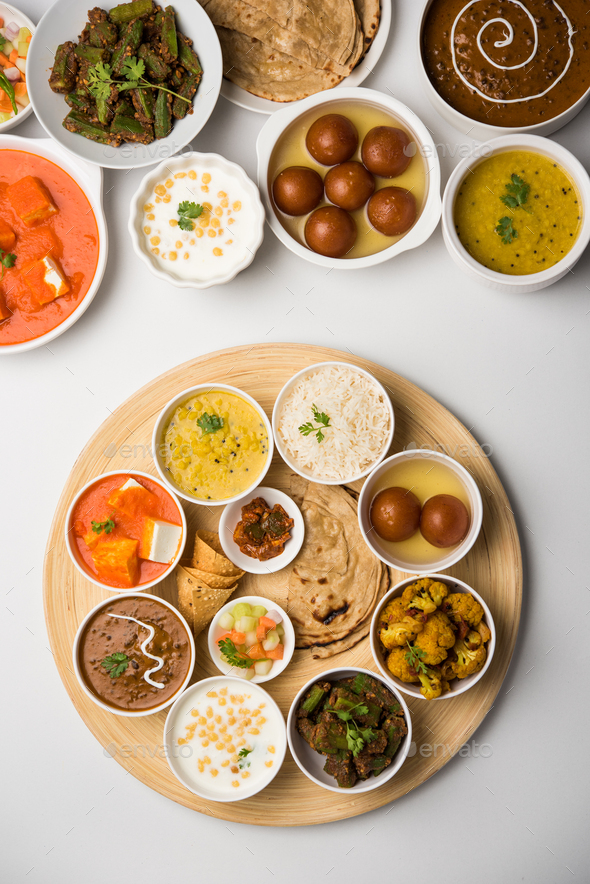
Desserts such as rasagolla, chumchum, sandesh, rasabali, chhena poda, chhena gaja, and kheeri are popular in East Indian cuisine. The Bengal and Orissa regions gave rise to many of the sweet foods that are today famous in Northern India.Traditional Bengali cuisine is neither overly hot nor subtle. Mustard seeds, cumin seeds, black cumin, green chilies, and cumin paste are common components in Bengali curries. Mustard oil is ideal for cooking mustard paste, curd, almonds, poppy seed paste, and cashew paste. Bata (paste), bhaja (fries), chochchoree (less spicy vaporized curries), and jhol are the many types of curries (thin spicy curries). These are served with ghonto or plain cooked rice (spiced rice). Pantabhat (biotically degraded cooked rice), doi-chirey, and doodh-muree with fruits make up a traditional Bengali breakfast.Rice is the staple grain in both Eastern and Southern India. A typical meal includes a variety of vegetable-based side dishes. Dalma and Santula are two of Orissa's most popular vegetable recipes. Sukto is Bengal's most popular vegetable dish. Vegetables that have been deep-fried, shallow-fried, or mashed are also popular. Fish is a common ingredient in everyday meals.
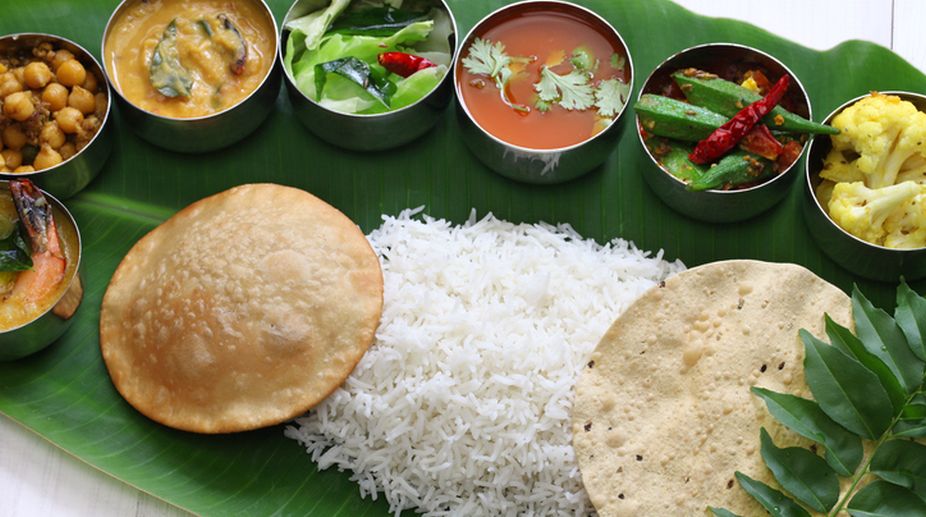
South Indian cuisine is marked by a larger emphasis on rice as the basic grain, the prevalence of sambar (a vegetable stew made with tamarind and toovar dal stock) and rasam (a soup produced with tamarind juice or tomato, pepper, and other spices), a variety of pickles, and the extensive use of coconut, notably coconut oil and curry leaves.Dosa, vada, poori, bonda, idli, and bajji are popular breakfast items in South India. Hyderabadi biryani is one of the dishes that widely shows the diversity of south Indian cuisine.Food in Tamil cuisine is classified into six flavors: sweet, sour, salty, bitter, pungent, and astringent. To give complete nourishment, decrease cravings, and balance the appetite and digestion, traditional Tamil cuisine recommends including all six tastes in each main meal.Steamed rice with a range of vegetable dishes such as sambar, dry curry, rasam, and kootu are part of a typical dinner eaten on a banana leaf. Crisp appalams are frequently served with meals. A meal is finished with a little banana and a few betel leaves and nuts after a final round of rice and curds or buttermilk, or both.
There are three primary food categories in Western India: Gujarati, Maharashtrian, and Goan. Maharashtrian cuisine can be divided into two categories based on geographical factors. Rice, coconut, and fish are consumed more in coastal regions, which are geographically comparable to Goa. Groundnut is used instead of coconut in the mountainous regions of the Western Ghats and the Deccan plateau, while jowar (sorghum) and bajra (millet) are the staple grains. Coastal Konkani Indian cuisine includes Saraswat food.Gujarati food is almost exclusively vegetarian. Sugar or brown sugar is used in many Gujarati cuisine, giving them a sense of sweetness. A typical Gujarati lunch includes wheat flour flatbread, daal or kadhi, rice, and sabzi, a dish made out of various vegetable and spice combinations that can be stir-fried, spicy, or sweet.Homemade pickles, kichdi (rice and lentil or rice and mung bean daal), and chhaas are all staples (buttermilk). Steamed veggies and daals are combined with a vaghaar, a spice mixture sterilized in hot oil that varies depending on the main ingredient.
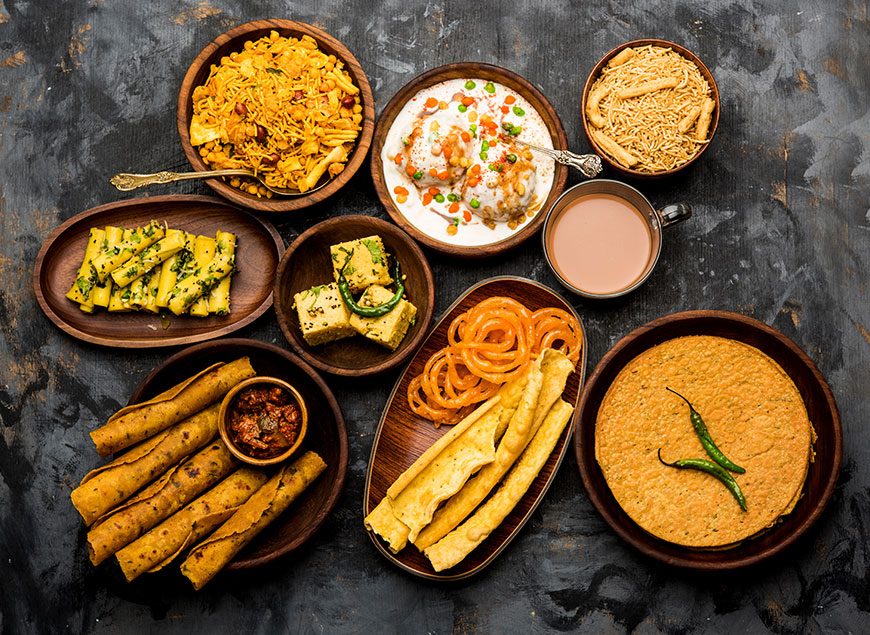
The cuisine of the North East differs significantly from that of the rest of India. North Eastern cuisine is heavily inspired by bordering Burma and the People's Republic of China, and uses fewer Indian spices than other regions. In this part of India, yak is a popular meat.
